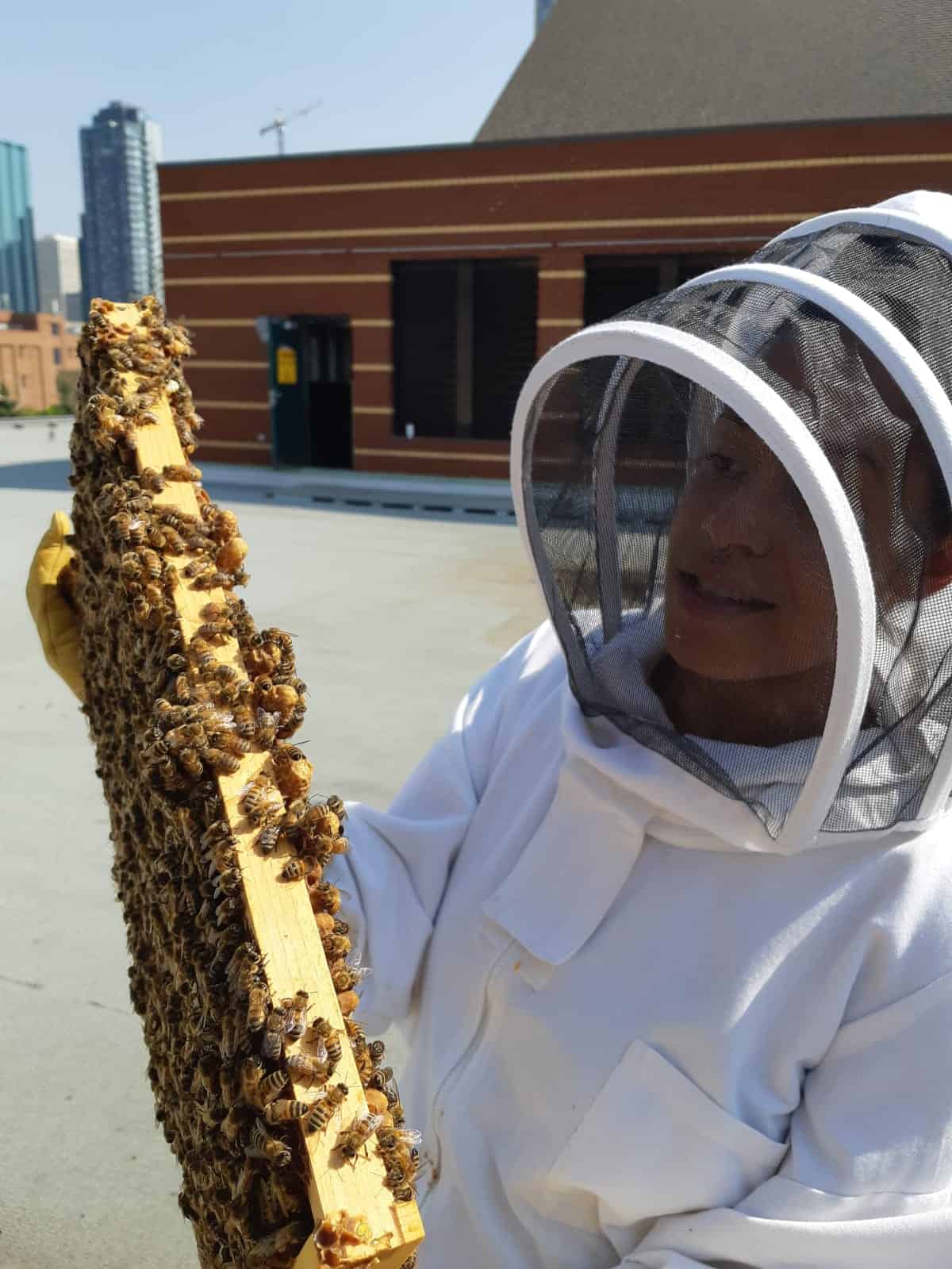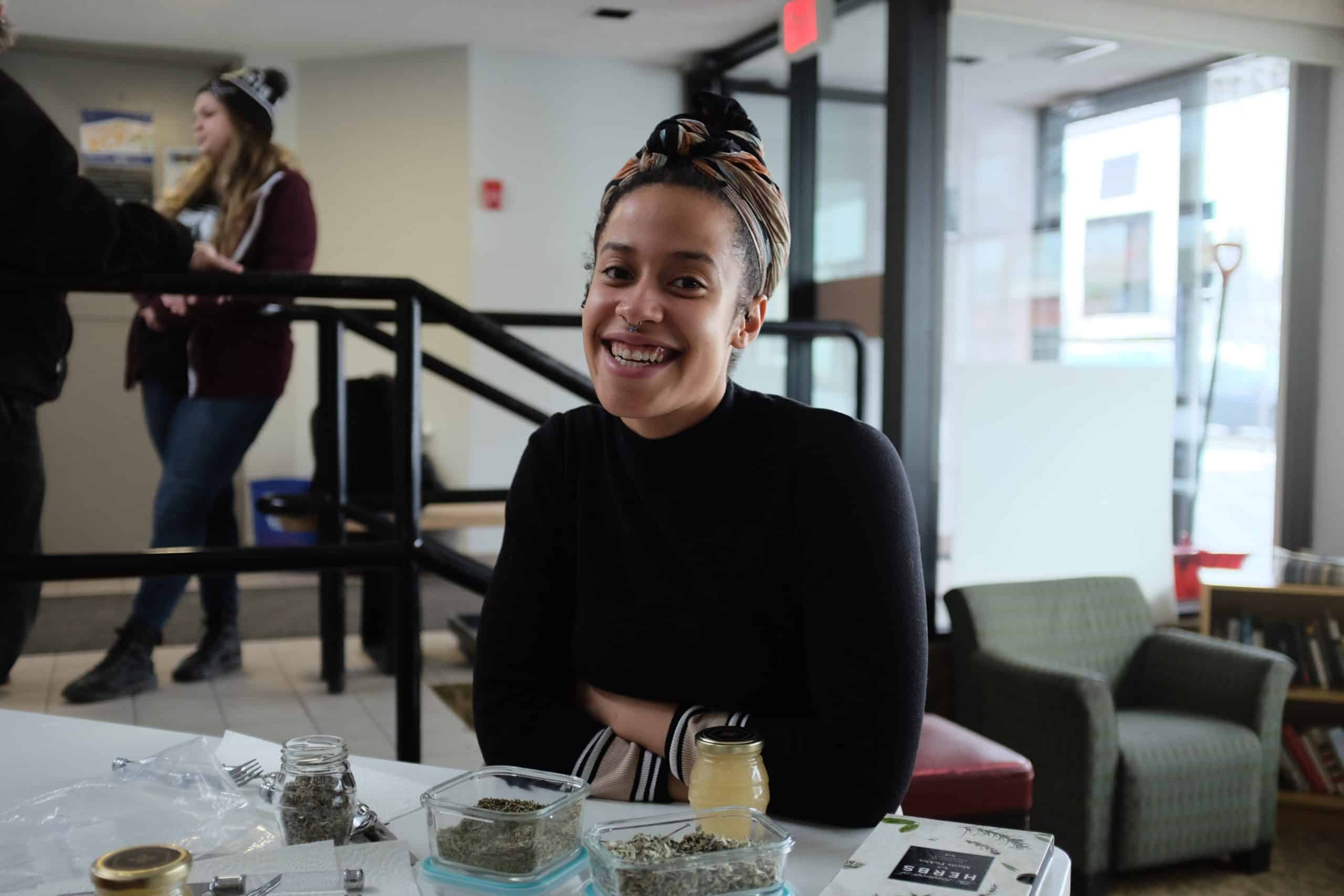A beekeeper tends to her charges
When Alberta Avenue’s beekeeper, Amelia Altmiks, describes her role as “basically a bee landlord,” you may want to rethink an initial reaction of landlords being stung by bad tenants. Out of millions of tenants, she has only been stung four times in six years, whereas many landlords learn a bad human tenant’s sting is far more painful to their bottom line.
As their landlord, Altmiks “helps bees do what they need to do and stay in the hive.” At the end of the season, she minimizes their space so they have less honey to guard, as wasps will invade the hive to eat the bees and the efforts of their hard work. In the middle of summer, which is the growing and pollen season, the population of the hive grows and they need more space for their honey.
Beekeeping in Alberta is “quite a bit of work due to shorter pollen seasons of pollen flow in northern Canada. We only have four or five months.” Altmiks inspects the hives once a week in peak season, about an hour per box, as things change fast, and once every 10-12 days during spring and fall. “I check to make sure there are no disease or pest issues.”


Over winter, Altmiks prepares for spring by building and sanding extra boxes, as well as dusting off snow when she visits the hives. “We will try to get them in the new greenhouse [in the community garden] if it is ready in time.”
Climate change is a major challenge for their health. “The drastic changes from freezing temps of -30 C to unseasonably warm thaws above zero can be difficult for the bees.” Altmiks then uses emergency blankets and fuzzy insulation in the top boxes. “Honeybees are not native to North America. As climate and weather fluctuations continue, we will have to do different things like bring them indoors.”
Bees stay alive throughout winter, although the queen produces fewer eggs. The cycles of birth and death mean the hive’s autumn occupants are different from the ones emerging in the spring. Altmiks also monitors two-way airflow. “Last year, the smoke and really hot temperatures meant the plants produced less pollen.” Smoke from forest fires can mean the bees are going into winter more stressed than if the summer had been smoke-free.
Beekeepers occasionally need to use smoke to keep bees in the hive, and with smoke pollution, bees don’t want to leave although they still need food. Altmiks adds, “I smoke them all the time to move them around during hive inspections. This prevents me from squishing a bunch of bees when I place the bee boxes back together. They will move out of the way when I smoke them. This has nothing to do with smoke pollution.”
When bees aren’t doing well, Altmiks feeds them sugar water, “which is like fast food to them. They will eat it only if they need it.” Now that you know more about The Secret Life of Bees (Altmiks’ favourite movie about the miraculous wee creatures), readers might consider joining her league of bee heroes by planting plenty of early and continuously blooming plants, and late fall blooming species like squash to extend the pollen supply throughout Alberta’s short season. In order to set up a hive in the city, you must have urban beekeeping certification. Backyard hives began when the City of Edmonton approved backyard hens and the bee pilot in 2015 through an urban agriculture initiative.
Passionate about her role, the health of the bees under her care is primary for Altmiks. “We started the community’s hive in 2020. This is the first year we harvested.” She assessed their health status before taking honey.
League board members sold the harvested honey at the recent 100th anniversary celebration. They even offered honey whiskey samples and saved some for future pub nights. Not to worry, though. If you become a beekeeper, your tenants will pay you back in honey and never throw wild parties. Just watch out for the marauding wasps that can destroy the neighbourhood.







